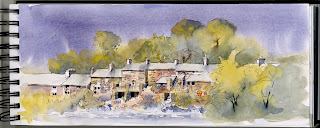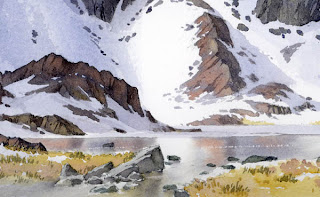It’s always nice to know your books are appreciated and the heartening news is that my Complete Guide to Watercolour Painting has been awarded the distinction of ‘one of the best How-to books of the year’ by the US Library Journal in New York. This, I believe covers all sorts of how-to books, not just art, so it is really pleasing that it has been recognised in this way.
This watercolour, Norfolk Wetlands, is featured in the book, and looking at it I can still hear the water lapping against the shoreline and the sheer peace and tranquillity. Notice how although the main emphasis of detail is on the left-hand side it still works as a composition. Sometimes it’s good to break the rules and try for something a little different. I’ve placed the birds leading away from the focal point (the trees), and also highlighted the focal point with strong tonal contrasts. If you want to emphasise tranquillity then keeping your composition mainly horizontal will help enormously. Avoid to many strong verticals.
The Complete Guide to Watercolour Painting is now available in paperback, with a great many hints and tips crammed into its 128 pages. Signed copies are available from http://www.davidbellamy.co.uk





